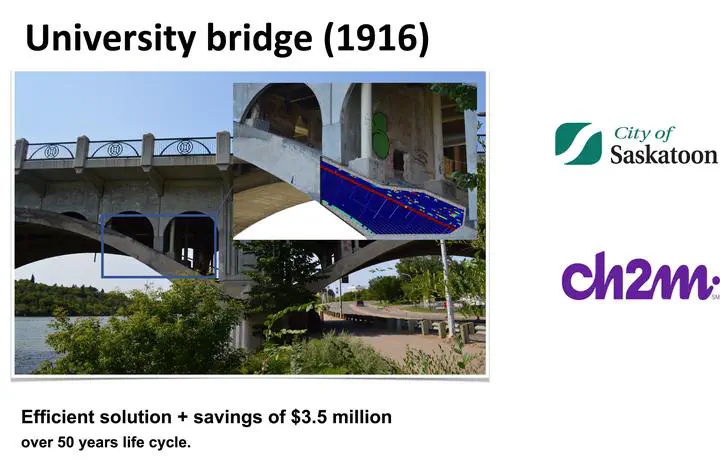University Bridge Rehabilitation Assessment

The historic University Bridge in Saskatoon, established in 1916, was slated for an extensive rehabilitation in 2015 to renew its deck, arches, and piers. This initiative is backed by an in-depth assessment, focusing on prospective strategies for enhancing the bridge’s arches.
To ascertain the most effective rehabilitation approach, our team:
- Undertook Experimental Analysis:
Concrete and rebar samples from various bridge components, including Arches C and D, underwent rigorous testing. This involved evaluating concrete compressive strength, pore solution composition, and rebar electrochemical properties. Additionally, probes measured internal concrete environmental conditions, like water saturation and oxygen levels.
- Developed Numerical Models:
These models were fine-tuned based on the experimental data to simulate real-world scenarios. Simulations spotlighted key findings like potential corrosion acceleration due to carbonation and the effect of concrete moisture levels on corrosion rates. The metal type used during the bridge’s construction influenced some of these outcomes.
- Assessed Rehabilitation Solutions:
Among the strategies considered, Fiber Polymer Plastic wrap, although effective in certain conditions, required additional corrosion mitigation measures due to its potential risks. Based on our comprehensive evaluations, the most promising solutions were shortlisted: silane sealer, galvanic cathodic protection, and a combined approach of both.
Following this robust assessment, the team proposed the deployment of three test panels to monitor these strategies’ efficacy over three years, ensuring the University Bridge’s longevity and safety for years to come.